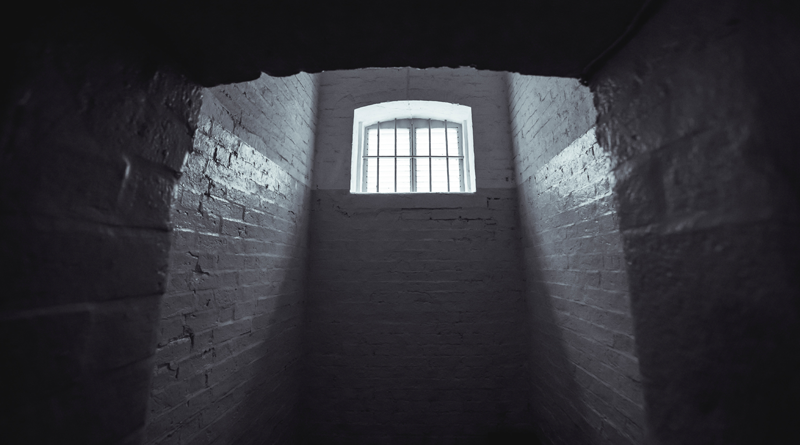Deliberate Obsolescence: Time for a Re-Think of the Useful Life of Prisons?
By Stephen Carter
Jennifer Senior, who won the 2022 Pulitzer Prize for Feature Writing, recently published an article entitled The Puzzling Gap Between How Old You Are and How Old You Think You Are. In the article, she cited recent Danish research that suggests that most of us think of ourselves about 20 percent younger that our actual age. Let that sink in for a minute. She did not say “how we feel” but how we think of ourselves. How we feel sometimes is at least 20 percent in the other direction.
She goes on to use a term of psychology – proprioception – which essentially means an awareness of where our body is relative to space, but not necessarily time. So far, my brain (which I hope is at least 20 percent younger than my body) is basically grasping her hypothesis.
Buildings don’t yet have minds. But, again, those Scandinavians as well as some Far Easterners, are promoting the concept of “smart buildings”, especially prisons. Much is being touted about the elements of a smart prison where the infrastructure is designed to anticipate, if not directly act upon, decisions that would normally require human intervention. In the simplest example, think lighting or temperature controls which can be programmed to “think and act” on their own.
Three very broad policy, practical, and economic conditions could impact approaches and building needs in the correctional field. The first examines the public will and attendant policy changes in which a reduction in the number of those incarcerated is reduced along with policies that reduce the length of confinement. In my mind, this is smart thinking.
The second practical initiative is the use of artificial intelligence and three-dimensional printing in construction. From a 2021 article by Grand View Research, over the next five years, the global 3D construction market is expected to grow by 91%. The potential use of artificial intelligence and new materials to design and construct is especially applicable to correctional facilities due to the repetitive nature of the housing components.
The third shift that is occurring is financial, both in the cost to construct correctional facilities and how this cost will be financed. Everyone remotely involved with the design and construction is keenly aware of the uncertainty in the supply chain and the volatility in the cost and delivery time of materials. At the same time the “tried and true” methods of financing construction costs have become less tried and certainly less true. Who would have thought that some traditional lending institutions no longer have an appetite for financing correctional environments?
The correctional industry can manage one of these seismic shifts but all three at once requires a new dialogue around three basic questions: 1) Do we build at all and if so, how big? 2) Is the permanency associated with a traditional jail or prison a given? and 3) Is owning what you occupy the best solution for government given the answers for #1 and #2?
Traditionally, we have become accustomed to a life expectancy of 30 years for correctional facilities knowing full well that for most jurisdictions this timeframe has more to do with debt retirement than actual usable life. Those facilities that are well maintained with an investment in preventative maintenance last much longer.
A person that lives as if they are 80 percent of their actual age does so because of an investment in lifestyle, wellness, nutrition; and mindfulness; in other words, a sustainable commitment to preventive care over an extended time period. While a building, and certainly a correctional facility, is incapable of caring for itself, the infrastructure can and does remind us that preventive maintenance will keep the facility “younger” than its actual years. For example, the Arlington County Jail (Virginia) is 30 years old but looks half that age. Across the Potomac River, the District of Columbia Correctional Treatment Facility is also 30 years old but looks closer to 50.
Looking at profile data from many correctional systems supports the notion that a large percentage of those incarcerated could be managed outside a correctional environment but if for societal, political, locational, and/or philosophical reasons confinement is the only option, why not consider structures with a planned obsolescence?
Before heretic enters your head, consider that a jurisdiction must significantly improve or replace a facility but is in the midst of a transformative restructuring of the correctional system that could alter the bedspace demand and profile of those incarcerated. Does spending millions on a new traditional facility really make good economic sense if secure, normative solutions are available through the use of transitional, replaceable, or repurpose-able components that accomplish the same purpose at a fraction of the cost? I know of at least one jurisdiction that is considering this deliberate obsolesce approach.
My point is that we truly have our backs to the financial wailing wall and the design and construction industry should do less wailing and more creative exploration of why and how planned obsolescence can actually be an option for some jurisdictions. New systems, components, products, and services are available that encourage this rethink of meeting demand with non-traditional solutions. Why can’t we at least explore the option?
Back to a mindset that is 80 percent of my biological years; I truly appreciate Jennifer Senior and the Danes making my day. Accepting her proposition, the Government is going to come out remarkably well because a lot of us geezers will be returning our social security checks…. Forever young!!
Stephen Carter, AICP
March 2, 2023
Stephen Carter is the executive vice president and global strategic development officer at Miami-based CGL Companies.
Editor’s Note: This column originally appeared in the March/April 2023 issue of Correctional News.

